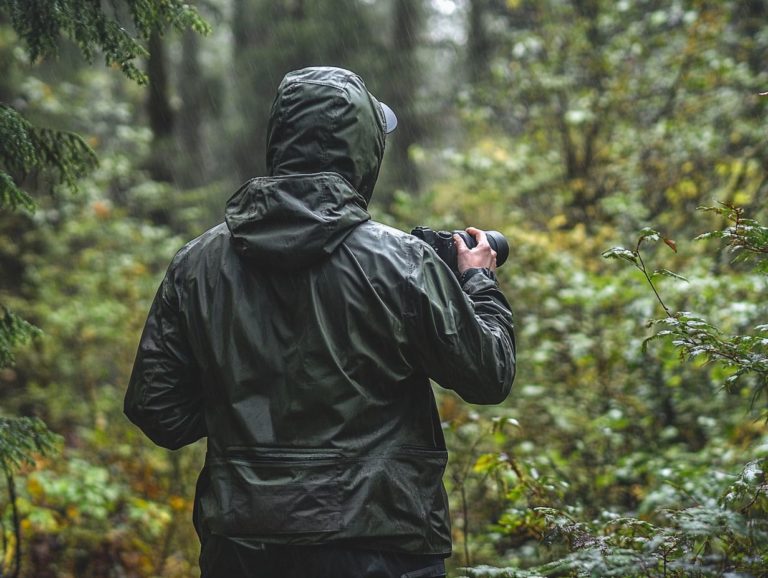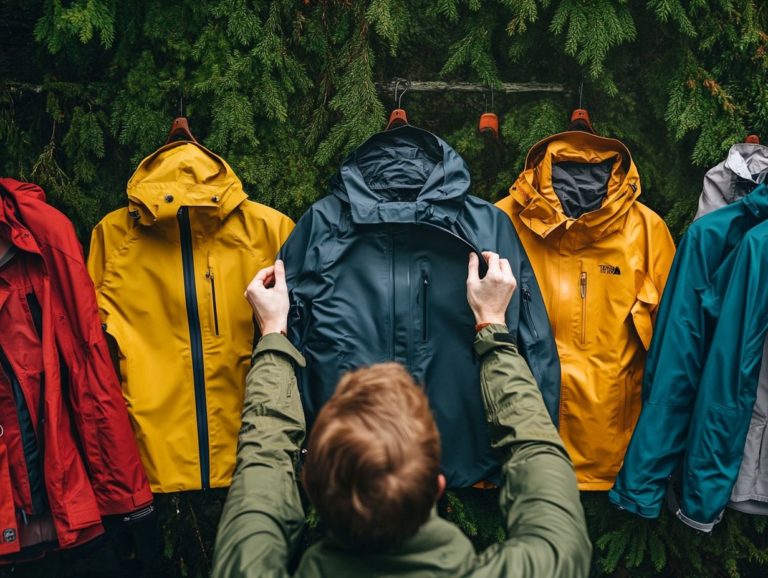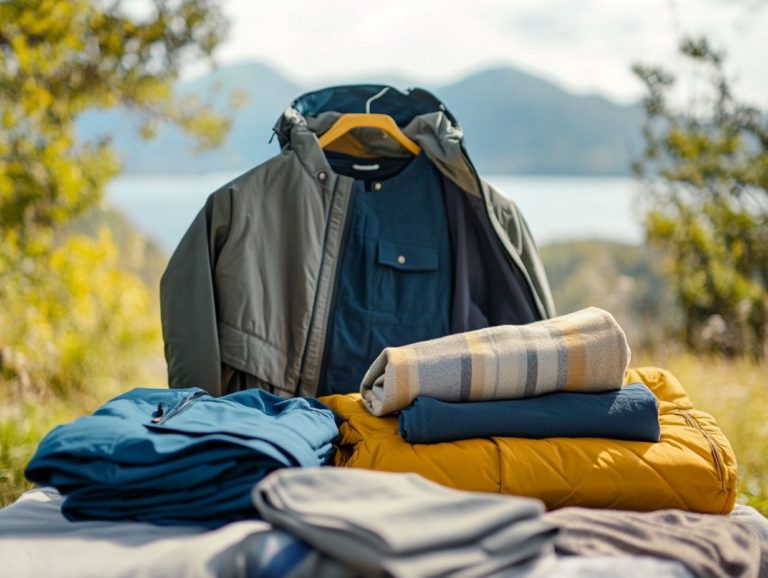The Best Base Layers for Cold Weather Camping
When you venture into the great outdoors for cold weather camping, selecting the right base layer becomes essential for your warmth and comfort.
With a plethora of options at your fingertips from wool to fleece and everything in between it can feel a bit daunting to pinpoint which choice aligns best with your needs.
This article delves into the top base layers, showcasing their distinct advantages and possible drawbacks.
You will also find tips on making informed selections, layering effectively, and caring for your gear, ensuring a cozy camping experience.
Get ready to find the perfect base layer for your next adventure!
Contents
- Key Takeaways:
- 1. Wool Base Layers
- 2. Synthetic Base Layers
- 3. Silk Base Layers
- 4. Merino Wool Base Layers
- 5. Fleece Base Layers
- 6. Down Base Layers
- 7. Cotton Base Layers
- 8. Polypropylene Base Layers
- 9. Bamboo Base Layers
- 10. Thermo-regulating Base Layers
- 11. Moisture-Wicking Base Layers
- 12. Insulated Base Layers
- 13. Windproof Base Layers
- 14. Lightweight Base Layers
- 15. Compression Base Layers
- What to Consider When Choosing a Base Layer for Cold Weather Camping?
- Frequently Asked Questions
- What are the benefits of wearing base layers for cold weather camping?
- What features should I look for in the best base layers for cold weather camping?
- Are there different types of base layers for different cold weather activities?
- Should I choose synthetic or natural fiber base layers for cold weather camping?
- How many base layers should I wear for cold weather camping?
- Can base layers be worn as outerwear for cold weather camping?
Key Takeaways:
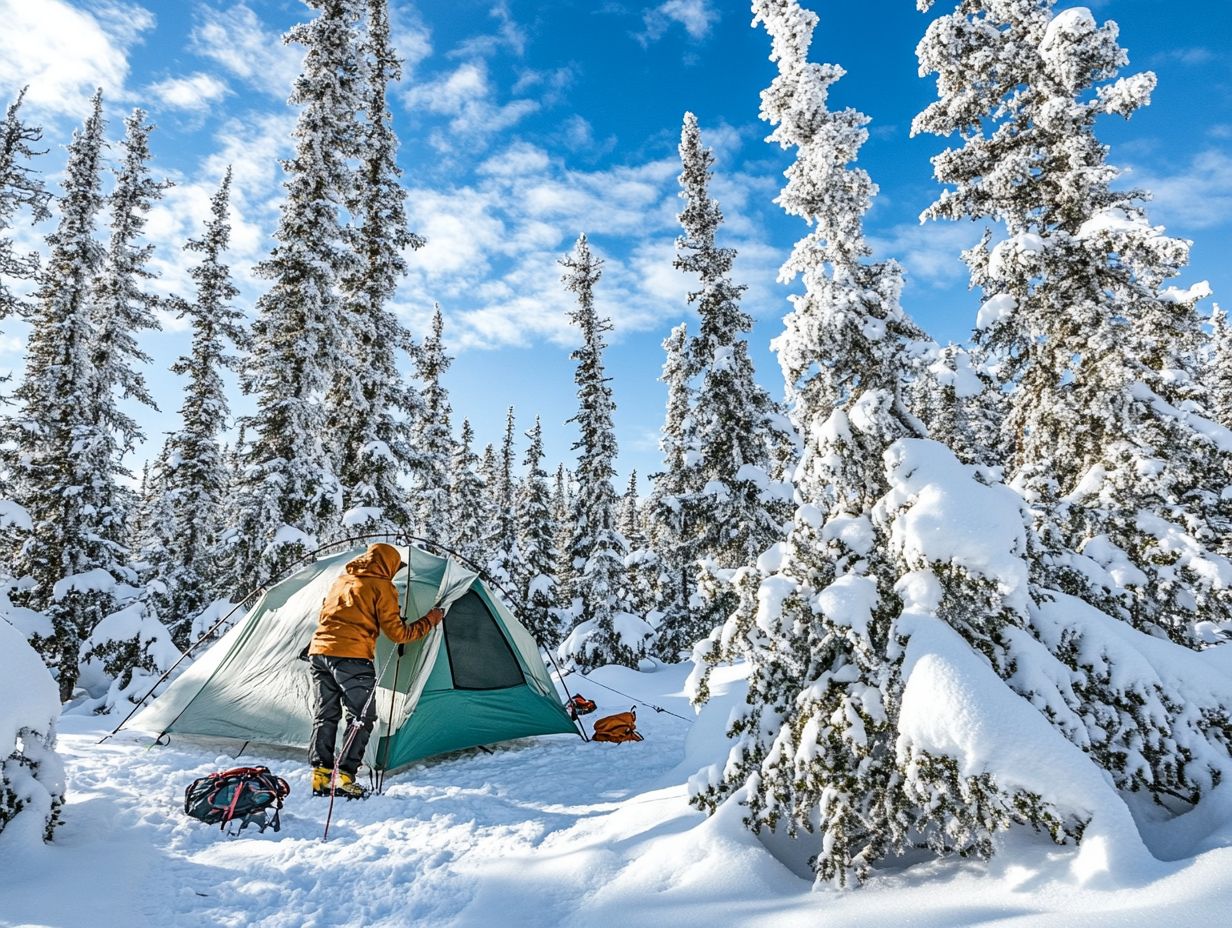
- Wool, synthetic, and silk base layers are great for cold weather camping, each with unique benefits.
- When choosing a base layer, consider warmth, moisture-wicking abilities, and weight.
- Properly layering your base layers maximizes warmth and comfort while camping in cold weather.
1. Wool Base Layers
Wool base layers are essential in your outdoor wardrobe, celebrated for their impressive heat retention and ability to handle moisture. They serve as a fantastic choice for both warm weather and winter layering, especially during high-energy activities like hiking and camping.
These layers are designed to regulate your body temperature, keeping you warm when the temperatures drop while efficiently wicking away moisture during those challenging physical endeavors. By utilizing natural fibers, options like Smartwool Classic and Ibex Woolies offer superior odor resistance compared to synthetic alternatives, which tend to trap smells and demand frequent washing. This feature not only enhances your comfort but also extends the lifespan of your garments, making them a wise investment.
As you embrace a sustainable lifestyle, the advantages of wool its renewability and biodegradability further reinforce its appeal as a top choice for those who value performance without compromising on eco-friendliness.
2. Synthetic Base Layers
Synthetic base layers are expertly engineered for high performance, often crafted from midweight polyester and quick-drying fabric that provides outstanding moisture-wicking capabilities and comfort in various outdoor conditions.
These garments are designed to keep you dry and comfortable by effectively drawing sweat away from your skin to the outer layers, where it evaporates swiftly. This feature is particularly advantageous during rigorous activities such as hiking, skiing, or cycling, where temperature fluctuations and perspiration can significantly impact your overall performance.
When compared to traditional wool base layers, synthetic options generally offer enhanced stretch for improved mobility, along with the added benefit of drying much faster. Popular choices like Patagonia’s Capilene and the Cool Daily Hoodie showcase these advantages beautifully, delivering next-to-skin comfort without compromising on functionality. They re perfect for anyone in search of versatile gear that can adapt to unpredictable climates.
3. Silk Base Layers
Silk base layers present an elegant and lightweight option for outdoor enthusiasts like you, offering exceptional comfort and breathability. They re perfect for summer camping or as a layering piece beneath heavier garments in colder climates.
With their luxurious fabric properties, you ll enjoy less bulk while experiencing the freedom of movement you crave. Unlike many synthetic materials that tend to trap heat and moisture, silk naturally wicks away perspiration, drawing it away from your skin to keep you dry and comfortable.
In contrast to wool which can sometimes feel heavy and irritate sensitive skin silk maintains a soft touch and allows air to circulate freely. This unique combination of lightweight warmth and moisture management makes silk base layers an exceptional choice for anyone who values both performance and style.
4. Merino Wool Base Layers
Merino wool base layers are a luxury. You’ll appreciate their sumptuous feel and exceptional thermal insulation.
These garments are great at managing moisture. They wick away sweat, keeping you dry during intense activities.
They also resist odors, so you can hike or ski all day without worrying about smells.
Brands like Smartwool combine comfort with functionality. They offer versatile options for all outdoor adventures.
Whether you re tackling a challenging mountain trail or enjoying a brisk winter run, Merino wool base layers provide dependable support and ease.
5. Fleece Base Layers
Fleece base layers provide remarkable warmth and insulation. They are perfect for your winter layering strategy when temperatures drop.
The unique fabric structure of fleece traps air. This creates a cozy barrier against the chill while allowing moisture to escape.
In contrast to wool, fleece is lightweight and quick-drying. It stands out for its comfort during strenuous activities.
Though synthetic materials may offer durability, they often lack the unparalleled softness and flexibility of fleece.
By choosing fleece, you gain essential warmth along with ease of movement and breathability. This allows you to tackle challenges head-on without feeling constrained.
6. Down Base Layers
Down base layers are revered for their exceptional thermal insulation properties. They’re the go-to choice for outdoor enthusiasts in extremely cold conditions.
Lightweight and compressible, they make packing a breeze while ensuring superior warmth without the bulk.
However, down insulation does have some drawbacks. It can lose insulating properties when wet and requires special laundering techniques.
Synthetic options excel in moisture resistance and maintenance. They may be a more practical choice for those in damp conditions.
Your decision between these two types will depend on the outdoor activities and environmental factors you expect to face.
7. Cotton Base Layers
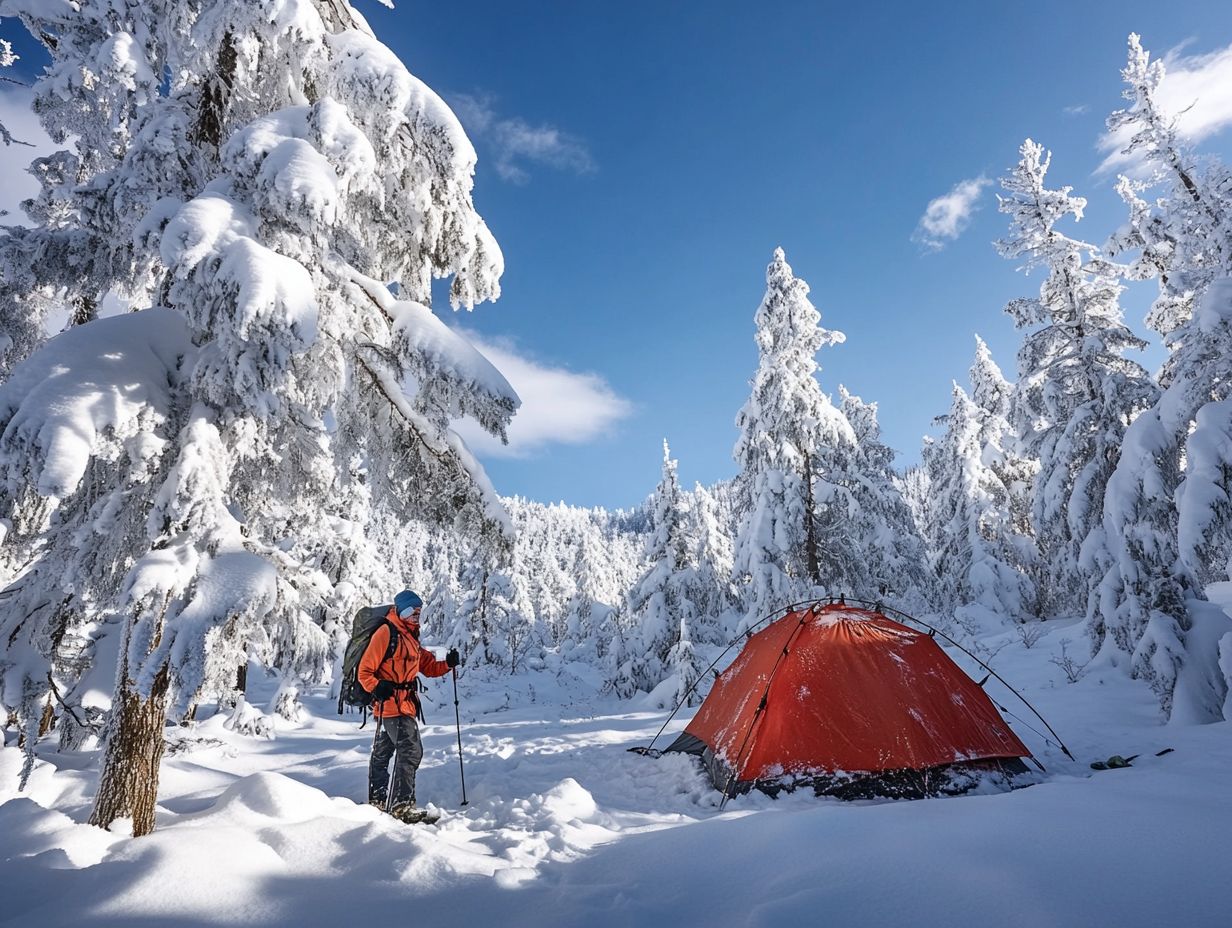
Cotton base layers are comforting and familiar. They re great for casual outdoor activities and warm weather.
However, cotton struggles with moisture management. It can hold onto sweat, leading to discomfort during vigorous activities.
In contrast, merino wool wicks moisture away and resists odors. For unpredictable conditions, synthetics are a better choice.
Choose the right base layer and elevate your outdoor experience today!
8. Polypropylene Base Layers
Polypropylene base layers are crafted specifically for moisture-wicking performance. They are your go-to choice for high-output activities, ensuring you remain dry and comfortable in any weather.
This remarkable fabric offers excellent thermal insulation. Enjoy your outdoor pursuits without the discomfort of chilling sweat on your skin. When compared to traditional materials like cotton or wool, polypropylene dries significantly faster, drastically reducing the risk of hypothermia, which is dangerously low body temperature, in colder conditions.
These base layers are lightweight and stretchy, providing you with the freedom of movement that s essential during vigorous activities. Thanks to their durability and resistance to abrasion, polypropylene emerges as a reliable choice for those who prioritize both performance and comfort.
Get ready to explore with confidence, knowing your gear has your back!
9. Bamboo Base Layers
Bamboo base layers are perfect for those who care about the planet. They offer a soft, breathable alternative for outdoor clothing while delivering impressive moisture-wicking benefits.
This luxurious fabric feels delightful against your skin. It boasts a significantly lower environmental impact compared to durable base layers and synthetic materials, which often contribute to pollution and waste. Unlike wool, which can leave some feeling itchy, bamboo fabric provides a gentle touch, ensuring you stay comfortable even during those long hours of wear.
Its antibacterial properties enhance your experience by reducing odor buildup, keeping it fresh with odor-resistant wool, even after the most rigorous activities.
Bamboo stands out as a versatile option that merges eco-friendliness with exceptional comfort. This makes it the preferred choice for eco-conscious consumers who value both performance and sustainability, including the best base layers for outdoor activities.
10. Thermo-regulating Base Layers
Discover how thermo-regulating base layers use advanced materials for temperature management. They expertly manage your body temperature, ensuring you experience optimal comfort during various outdoor activities, no matter the weather.
These innovative fabrics are crafted to wick moisture away from your skin while trapping warmth when needed. They are perfect companions for outdoor enthusiasts like you. Whether you’re tackling challenging terrains on a hike or enjoying a leisurely camping trip, you’ll appreciate the consistent thermal balance that adapts to both your intense exertion and restful moments.
This technology not only enhances your performance but also elevates your overall experience. You can focus on the beauty of your surroundings, rather than the discomfort of fluctuating temperatures. As a result, you’ll find that thermo-regulating fabrics seamlessly cater to your diverse outdoor needs.
11. Moisture-Wicking Base Layers
Moisture-wicking base layers are essential for your comfort during physical activities. They are specifically designed to pull sweat away from your skin and facilitate quick drying, making them particularly beneficial in outdoor settings.
These specialized fabrics think polyester, merino wool, and nylon employ advanced textile technologies that allow them to transport moisture to the outer surface, where it can evaporate more efficiently. Polyester is favored for its durability and rapid-drying properties, while merino wool, despite being a natural fiber, impressively combines moisture-wicking capabilities with temperature regulation.
When you re engaged in intense workouts, especially in warmer conditions, wearing moisture-wicking base layers can make all the difference. Unlike traditional cotton, which tends to cling to moisture and lead to discomfort and chafing, these advanced fabrics keep you dry and comfortable. Understanding the unique attributes of each fabric enables you to make informed choices that enhance your overall experience.
12. Insulated Base Layers
Insulated base layers are your go-to solution for essential warmth. They are carefully made to trap heat and enhance thermal insulation, making them absolutely essential for winter layering in frigid outdoor conditions.
These layers come in various materials, including merino wool, synthetic blends, and down, each offering distinct advantages tailored to different climates. For example, merino wool excels in moisture management while retaining warmth, making it ideal for milder winter outings. On the flip side, synthetic options shine in wet conditions, drying rapidly and keeping their insulating properties even when damp.
If you find yourself in extremely cold environments, adding down-insulated base layers will ensure maximum heat retention. When you combine these with outer shell layers, you create a seamless system that keeps your body warm while supporting breathability and moisture control crucial for maintaining comfort during strenuous activities.
13. Windproof Base Layers
Windproof base layers are expertly designed to shield you from harsh winds, providing essential weather resistance while keeping you comfortable during high-energy activities and outdoor clothing in challenging conditions.
These garments are typically constructed from advanced synthetic materials like polyester blends, nylon fabrics, or specialized membranes that effectively block the wind while maintaining a lightweight feel. Their design often features tight weaves and water-resistant coatings, enhancing their protective qualities.
Breathable layers are great for managing moisture, but they let wind in, making them less effective in gusty environments. Striking the right balance between warmth, breathability, and wind resistance is crucial. Windproof base layers truly shine in maintaining a comfortable zone, allowing you to stay active even when the weather isn t cooperating.
14. Lightweight Base Layers
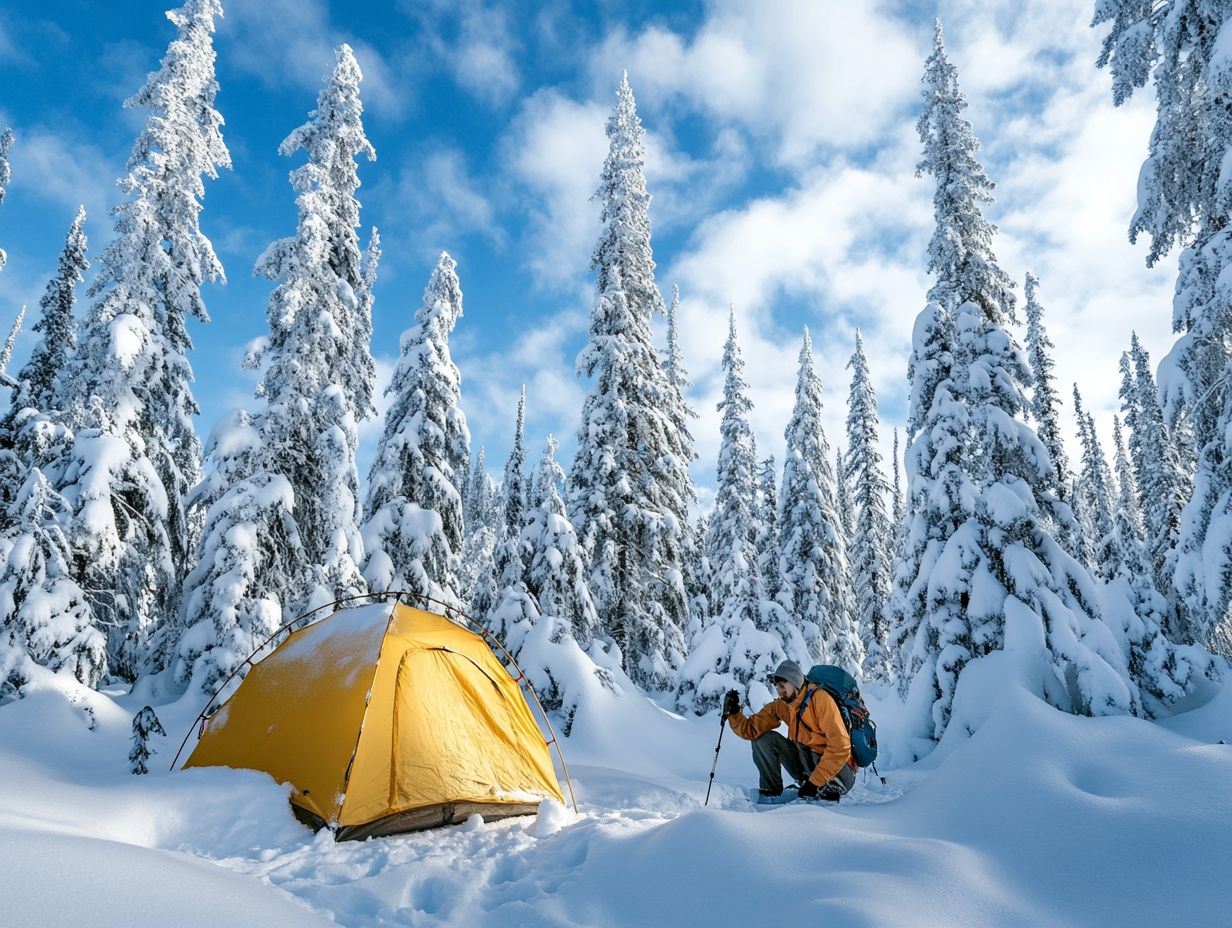
Lightweight base layers are your go-to for summer camping, offering essential comfort without the bulk. They let you move freely, perfect for those warm outdoor adventures.
Made from materials like moisture-wicking polyester, merino wool, or nylon blends, these garments are designed to pull moisture away from your skin and help regulate your body temperature. The breathability of these fabrics ensures that air circulates freely, keeping you comfortable and preventing overheating.
Their slim profile makes them easy to layer under other clothing, which can be a lifesaver when the weather changes unexpectedly. Whether you’re hiking on a sunny day or unwinding at camp as the evening cools down, you can t afford to miss these lightweight base layers in your gear collection!
15. Compression Base Layers
Compression base layers are carefully made to elevate your performance during intense physical activities. They provide targeted support to your muscles, promoting circulation while effectively reducing fatigue.
These garments fit snugly against your skin, creating that coveted second-skin sensation. This minimizes muscle oscillation and vibration as you move. The design stabilizes your muscles and joints, resulting in improved performance and a lowered risk of injury. Enhanced blood flow also means quicker recovery times, as oxygen is delivered more efficiently to your active muscles.
When you compare compression wear to traditional base layers, which generally focus on warmth without the same level of support, the difference is striking. Compression garments not only keep you dry but also actively work to enhance your performance and endurance, making them an essential addition to your athletic wardrobe.
Gear up now for your next adventure!
What to Consider When Choosing a Base Layer for Cold Weather Camping?
Choose the right base layer by focusing on key factors like thermal insulation, moisture management, and your planned outdoor activity. This way, you ll stay comfortable and perform your best, even in the cold.
Start by examining the fabric type. Synthetic materials are champions at wicking away sweat, while merino wool provides natural warmth without the bulk. A snug fit is vital; it traps heat effectively and blocks chilling drafts while still allowing air to insulate against the cold.
Think about your primary activity whether it’s hiking, skiing, or lounging by a campfire as this will guide your selection. Each activity demands different levels of breathability and durability, enhancing your overall experience in sub-zero temperatures.
How to Layer Your Base Layers for Maximum Warmth?
Effective winter layering requires a strategic approach to your base layers, maximizing warmth while keeping comfort at the forefront. Combine materials that enhance warmth and manage moisture for an enjoyable outdoor experience.
Your choice of base layers is crucial for balancing heat retention and breathability. Fabrics like merino wool and synthetic blends wick away sweat, keeping your skin dry and helping you avoid chills. To enhance your cold-weather experience, consider using the best survival gear for cold weather.
Using multiple layers allows you to adapt easily to changing temperatures add or shed layers as needed. Understanding how different materials work together boosts your overall comfort. For instance, imagine staying warm while hiking with a lightweight layer beneath a thicker fleece or down jacket.
When you consider these elements, you ll gear up for your adventure like a pro, ensuring your winter wardrobe is not only functional but also stylish.
What Are the Benefits of Each Type of Base Layer?
Each type of base layer brings unique advantages, from the warmth of wool to the moisture-wicking prowess of synthetic fabrics, like Classic All-Season, catering to various outdoor conditions.
Understanding these attributes can enhance your outdoor experience. Merino wool excels in colder climates, regulating body temperature and providing natural odor resistance perfect for skiing or winter hiking.
Synthetic fabrics like polyester and nylon are ideal for high-intensity activities such as running or cycling. They efficiently draw sweat away from your skin, keeping you comfortable during strenuous exertion. Cotton is generally avoided in chilly conditions but can work well for mild weather or casual outings.
By recognizing these materials and their benefits, you enable yourself to choose the perfect base layer for your adventures.
What Are the Potential Drawbacks of Each Type of Base Layer?
Each type of base layer serves a purpose, but it s important to be aware of their potential drawbacks. Cotton may retain moisture, wool can feel heavy, and some synthetic fabrics might struggle with breathability.
These limitations can affect your comfort and performance during activities. Imagine wearing cotton that becomes damp, leading to chills in cooler weather. Wool, while warm, might restrict your mobility, especially during high-intensity workouts. Certain synthetic options may not wick moisture away effectively, resulting in discomfort during extended wear.
Care requirements also vary; wool needs delicate handling and specific washing conditions, while synthetics can develop odors over time. Grasping these nuances is crucial when selecting the best base layer for your needs.
How to Care for Your Base Layers to Extend Their Lifespan?
Want your base layers to last? Follow these care tips! Proper care and maintenance are essential for extending their lifespan and preserving performance. This ensures that each piece continues to excel in moisture management and thermal insulation.
To achieve this, wash synthetic fabrics in cold water using a gentle detergent to keep their ability to draw sweat away intact. Avoid fabric softeners, as they can create a barrier that reduces effectiveness. For drying, choose air-drying to protect against damage caused by high heat. Store your base layers in a cool, dry place, away from direct sunlight, to maintain elasticity and prevent deterioration.
Wool base layers, meanwhile, thrive on a bit of extra care. Opt for hand washing or a delicate cycle with lukewarm water to retain their warmth and enjoy a longer life.
Frequently Asked Questions
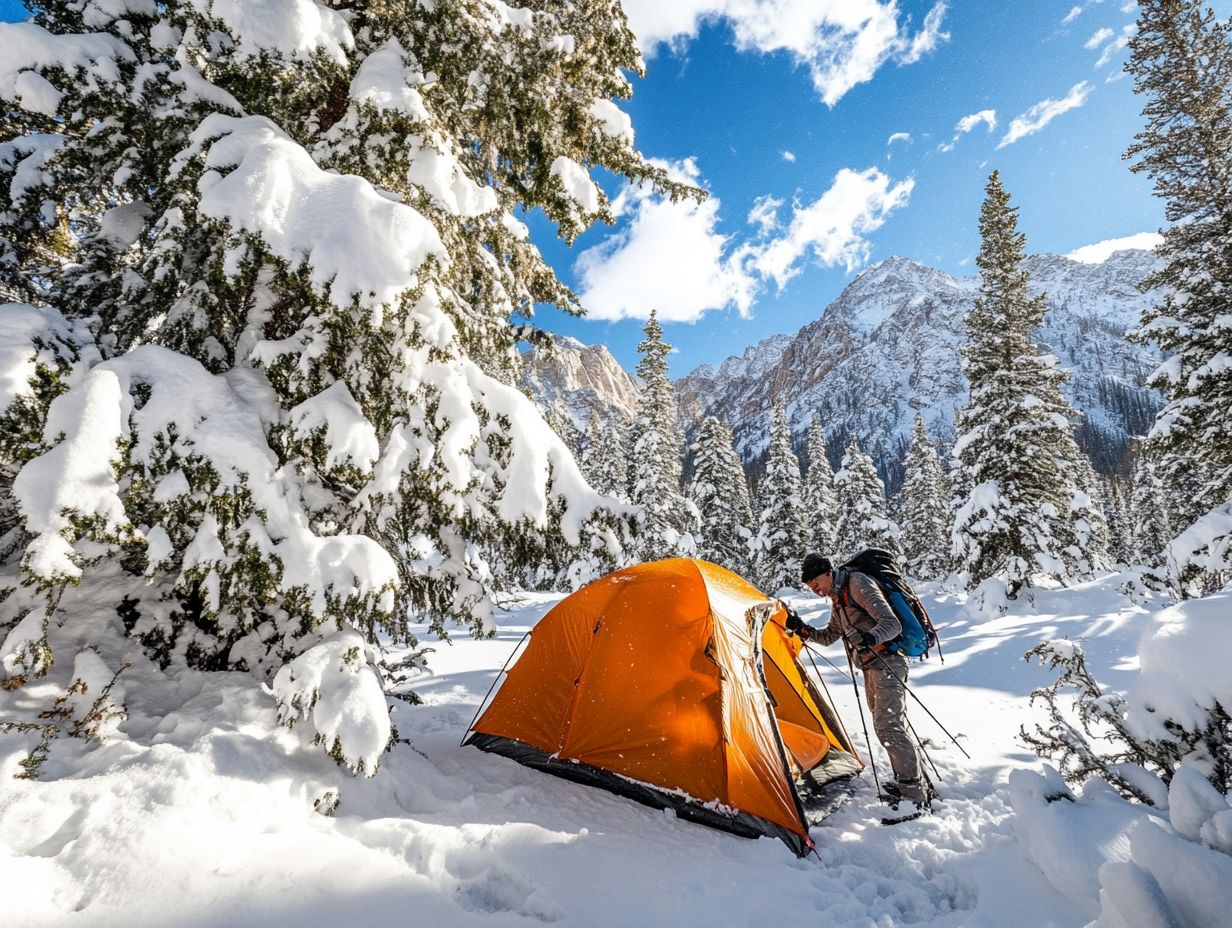
What are the benefits of wearing base layers for cold weather camping?
Base layers provide insulation to keep you warm, wick away sweat to keep you dry, and act as a barrier against the wind.
What features should I look for in the best base layers for cold weather camping?
The best base layers should be made of moisture-wicking material, have a snug fit, and provide warmth without bulkiness.
Are there different types of base layers for different cold weather activities?
Yes, there are various types for activities like skiing, snowboarding, or hiking. Each type may offer different levels of insulation and moisture-wicking capabilities tailored to the specific activity.
Should I choose synthetic or natural fiber base layers for cold weather camping?
It depends on personal preference. Synthetic base layers typically dry faster and are more durable, while natural fiber base layers tend to be more comfortable and provide better insulation.
How many base layers should I wear for cold weather camping?
It’s recommended to wear at least two base layers for maximum warmth and protection. You can adjust layers as needed based on temperature and activity level.
Can base layers be worn as outerwear for cold weather camping?
Some base layers are designed for outerwear, but it’s best to wear them under additional layers for added warmth and protection. You can also wear them as a standalone top in milder weather.
Now you’re ready to gear up and enjoy your cold-weather adventures!


